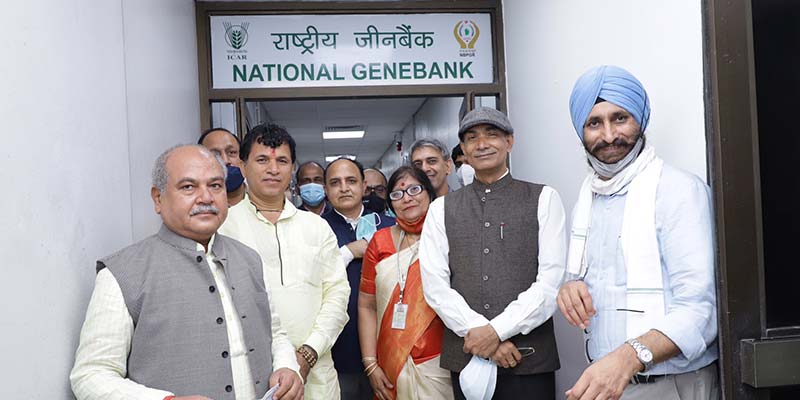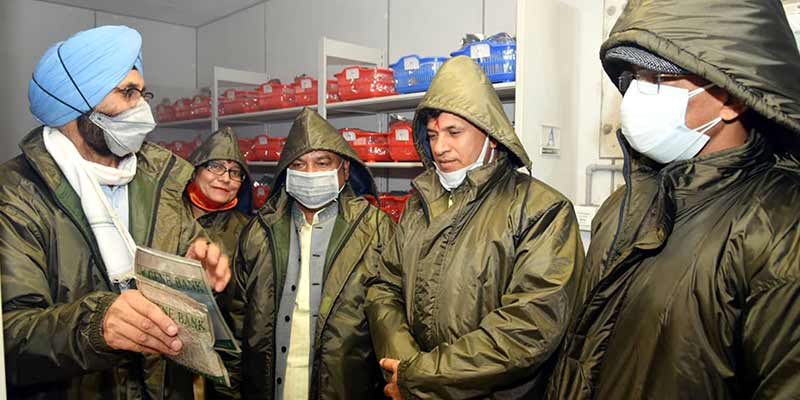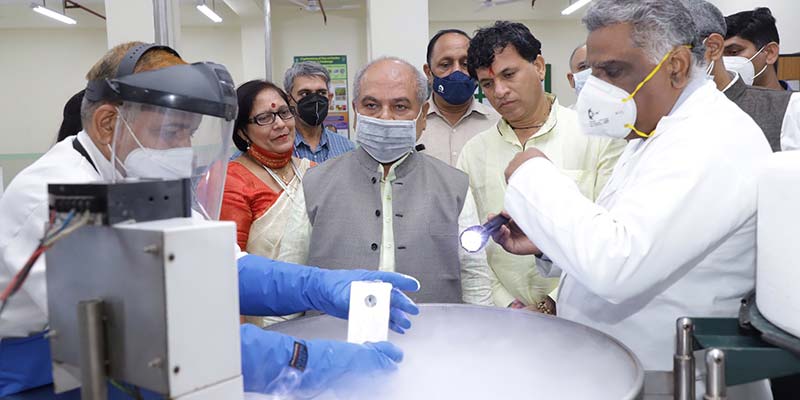- India
- Aug 17
Union Minister Tomar inaugurates revamped National Gene Bank in Delhi
Union Agriculture Minister Narendra Singh Tomar inaugurated a revamped state-of-the-art National Gene Bank at the National Bureau of Plant Genetic Resources (NBPGR) in the Pusa complex in New Delhi.
The ministry of agriculture said this is the world’s second largest gene bank.
National Gene Bank
• It was set up in 1996 to preserve the seeds of plant genetic resources for future generations.
• It has the capacity to preserve about one million germplasm in the form of seeds.
• Presently, it is protecting 4.52 lakh accessions, of which 2.7 lakh are Indian germplasm and the rest have been imported from other countries.
There are two types of seed conservation methods:
1) Those conserving accessions for long-term and future use (referred to as base collections).
2) Those conserving seed accessions for immediate or short term needs (referred to as active collections).
National Bureau of Plant Genetic Resources
• National Bureau of Plant Genetic Resources (ICAR-NBPGR), New Delhi was established in 1976 as a nodal institute for assembly of global diversity of plant genetic resources (PGR) that are of direct or indirect value to humans.
The component activities include:
• PGR collection through exploration, characterisation, evaluation.
• Safe conservation using both conventional storage and biotechnological approaches for in vitro conservation and cryopreservation.
• Generation and conservation of genomic resources.
• NBPGR has been given the national mandate to plan, conduct, promote and coordinate all activities concerning plant exploration and collection and also for safe conservation and distribution of both indigenous and introduced genetic variability in crop plants and their wild relatives.
• The Bureau is also vested with the authority to issue Import Permit and Phytosanitary Certificate and conduct quarantine checks on all seed materials and plant propagules (including transgenic material) introduced from abroad or exported for research purpose.
• The establishment of NBPGR coincided with the advent of the Green Revolution and was in response to the realisation of perceived effects of the Green Revolution on agrobiodiversity.
• Further, it was in accordance with the international developments in the form of establishment of the International Board for Plant Genetic Resources (IBPGR), Rome, in 1974 (now renamed as International Plant Genetic Resources Institute).
• The NBPGR played a pivotal role in the improvement of various crop plants and diversification and development of agriculture in India through germplasm introduction from various institutes/organizations located in foreign countries and germplasm collection from within the country and abroad and conservation thereof.
• The 10 regional stations of NBPGR, in different agro-climatic zones of the country and the 59 National Active Germplasm Sites (NAGS) are the integral component of the National Gene Bank Network.
• The NAGS are based at the premier institutes for specific crops or crop groups and are entrusted with the responsibility of multiplication, evaluation, conservation of active collections and their distribution to users both at national and international levels.
• Various other national institutes, All India Coordinated Crop Research Projects, State Agricultural Universities and other stakeholders are also linked to the network.
• International Agricultural Research Centers involved in conservation and use of PGR are also effectively linked to the network.
Manorama Yearbook app is now available on Google Play Store and iOS App Store



